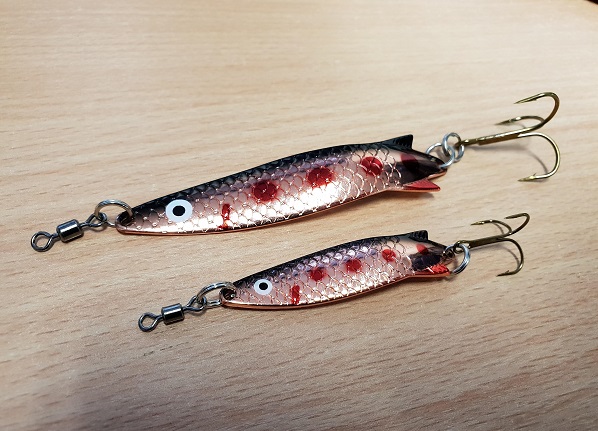What do you think about when some mentions fishing for predators?
Sharks? Barracuda? Pike? Catfish? Tarpon? Tuna?

What would you think if I said brown trout?
My favourite style of fishing is streamer fishing for brown trout in the rivers and lochs of Scotland.
I started properly fishing streamers about ten years ago. I was fishing my local river on a very hot and bright day in July. I was planning on scoping out the river throughout the day before heading back an hour before dark to fish the sedge hatch. But when I arrived at the river I spotted a few trout rising up river from the pools I had planned on fishing later on that day so I broke the rod out for a few casts.
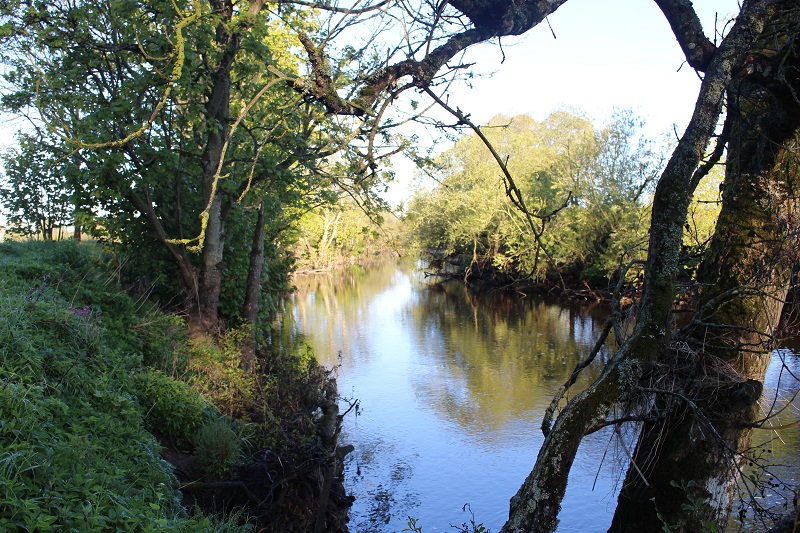
After an hour of throwing pretty much all the dry flies and nymphs in my fly box with not much success, I eventually hooked a trout about five inches long. Upon retrieving this juvenile trout, I spotted a huge trout which I estimated around the eight to nine-pound mark follow and grab the small trout. As it broke the surface it sent a ripple right down the pool. I never had it on for long, but it was long enough for it to take a good ten yards of fly line from my little three-weight reel.
After my hands had stopped shaking I searched through my many fly boxes in my waistcoat (I carry far too many boxes) and found a three-inch long black woolly bugger with an orange cone head that I was given many years ago from someone.
I made up a new leader from a tapered leader which I customised by cutting it down so it was about 10lb breaking strain, tied the fly on with a Rapala knot and got it in the water as quickly as possible.
I never saw that monster trout again but I did fish the rest of the day and had trout after trout. By the time it was dark I had roughly caught about 30 trout up to 3.5lb and had completely forgotten about the sedge hatch I was there for, lunch and my dinner.
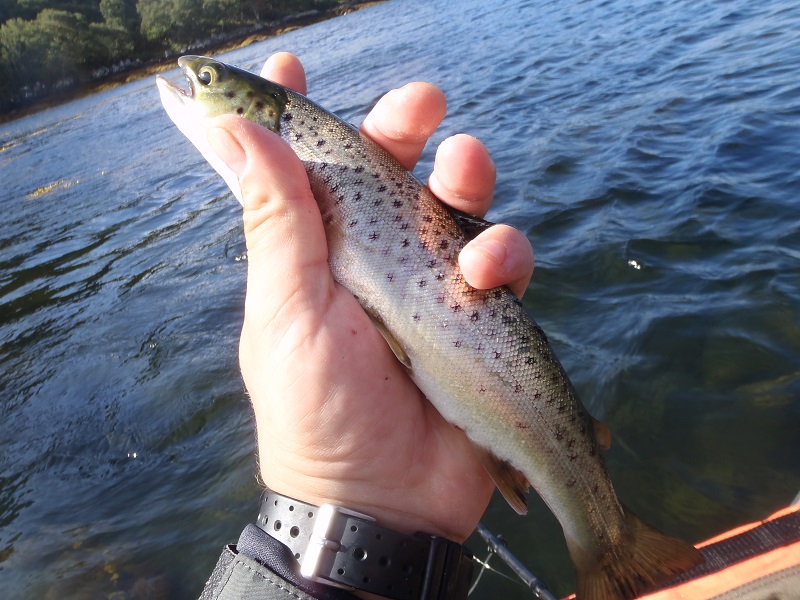
I remember that night, getting home and jumping onto my computer and searching streamer fishing and was presented with loads of information. It was a proper style of fishing. There were anglers in America that had built their career off the back of streamer fishing. I bought a few books on the subject and whilst flicking through them I realised that this style of fishing was fast, aggressive and loud which was the exact opposite of how I was fishing with nymphs and dries. It was exciting!
I dug out an old 9ft 6 weight rod from the shed and found a DI7 full sinker that I hadn’t used in a few years. I gave them both a good clean than sat down at my fly vice. I didn’t have any big hooks, the biggest I had was a size 4 Orvis long shank, so I decided to tie up a few woolly buggers with 4mm tungsten beads. I also found a fly tied by Kelly Galloup called the Butt Monkey. This zonker-like imitation had a huge wool head on it – I now realise it was a sculpin pattern but back then I thought it was silly.
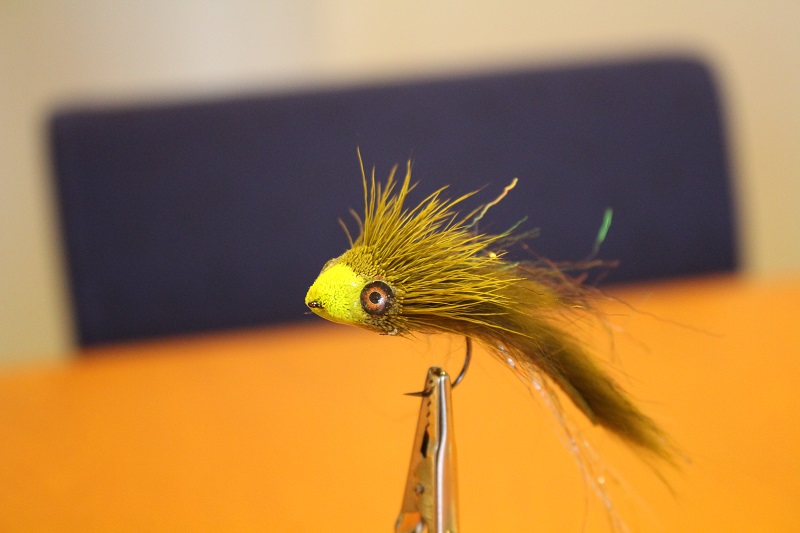
I started to create my own sculpin patterns.
I started fishing the river hard with some mixed success. I was catching loads of small fish up to about 8 inches long with one going a couple of pounds, but when I was researching streamer fishing on the internet it was full of pictures of anglers holding massive trout. I had to re-think my strategy. Over the rest of that season I tinkered about with patterns and fishing styles and it didn’t seem to make much difference. I became disheartened with it.
Then it clicked! I was always reverted back to the finesse style I was accustomed too. Fishing small flies nice and gently trying to create an easy meal for an opportunistic predator. These American anglers were using flies so big that it was pushing the fish off its lie and the trout were attacking them out of aggression.
It was time for me to up my game. I knew straight away throwing big flies would reduce my catch rate but I needed to try it. I hit my local tackle shop later on that day and bought size 1/0 and size 1 hook, some big hackles and some pike trace wire.
I tied up flies called Articulated Drunken Disorderlies and Butt Monkeys. These were insane! I would have fished these for pike.
The next few trips revealed why they fish flies like this. It was unbelievable!
These flies were 6-8 inches long and I was still catching fish of half a pound, but I started to see more 2lb trout appearing.
I had more 2lb trout in a couple of days than I had in seasons. That was me well on my way to becoming, as the Americans call it, a ‘streamer junkie’.
For streamer fishing I use rods ranging from 6 weight to 7 weight depending on the flies I’m using and the line I’m going to use. As long as they have enough backbone to throw big flies, it’s a good starting point.

For fly lines I use everything from a floater to a 300-grain sinking head. If I’m using a floating line I normally use a heavy streamer with a snap head or a 5.5mm bead on the front of it. I fish them jigged along the bottom under a high rod, working them through creases in deep pockets of water – a lot like the Czech nymphing style.
Most of the time whilst fishing this type of style, I use home-made lines that range from 200 grains to 300 grains. They’re made up of a fast sinking head and floating running line. There isn’t much false casting involved with them, just lift it out the water and chuck it and duck. Remember to always wear a hat and glasses.
On the end of my fly line I incorporate a heavy tapered leader and loop to loop connection of 2ft, 13.5lb Seaguar fluorocarbon on the end. I use a loop to loop connection on all my leaders for easy changeover.

As for the fish food, I carry streamers from 2 inches long to 12 inches long. There’s everything in there from minnow patterns to mice and rat patterns and in a variety of colours. My go-to fly is a 3.5inch long olive sculpin pattern on a size 1 hook. It has a light olive zonker strip tail and back, silver body and a dark olive/brownish stacked deer hair head. It’s a great searching pattern and in the water, it looks so appealing.
When I’m fishing a river, I walk upstream with polarised sunglasses. I’m looking for spots I think big trout will congregate, areas such as undercut banks, big rocks, deep channels and drop-offs, overhanging trees and trees that have been washed down river and dumped by the receding flood water. Just some form of structure for them to hide and ambush unsuspecting smaller fish.

Even though I use a fast sink line I’m looking for water up to 6ft deep and I cast upstream and put a huge downstream mend in the line so my fly is fishing down towards the trout. This helps to replicate a small injured fish struggling to swim into the flowing current. After mending the line I start retrieving with a jerk-strip retrieve so my fly is fishing mid-water so it makes a good silhouette to stand out.
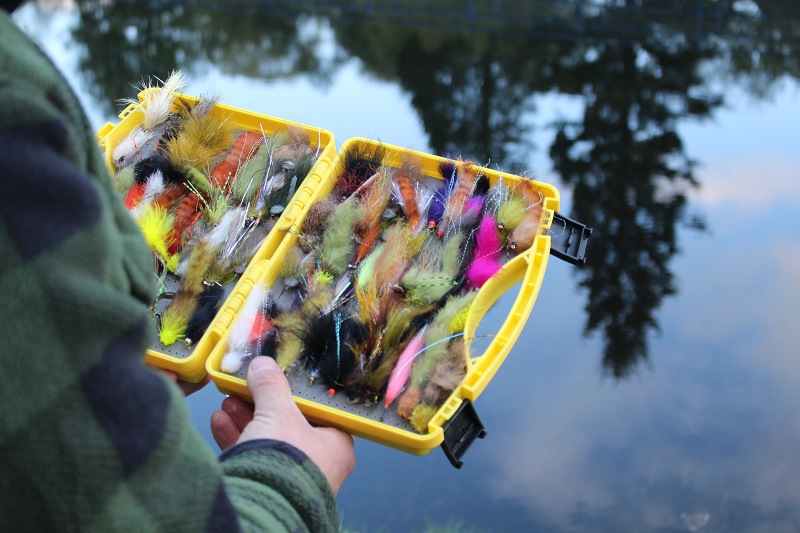
After about 20 minutes of covering a pool, if I have no interest I will change flies to something white or bright yellow in colour. A lot of the time, thinking outside the box picks up bonus fish. I can see myself changing fly a lot throughout the day until I find out what colour they’re after. One thing I think is more important than the fly colour itself is covering water efficiently. These flies make a lot of disturbance and if you present it to a fish a couple of times it can either spook it or trigger an attack.
Another way to fish streamers effectively is by presenting a streamer in the middle of a big hatch. My theory is little fish rising can gain the interest of bigger predators and then ambush the unsuspecting trout when they’re distracted.
Even if you’re not interested in fishing streamers put a couple in the corner of your fly box and if you ever have a day when the river is quiet, tie on a streamer and give it a swim. You never know you could catch a fish of a lifetime, I did!




